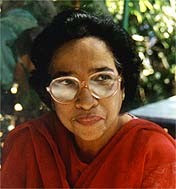

The 166 km drive from London to Nuneaton in the Midlands takes about two hours. It is the largest town in the County of Warwickshire, and has been made famous by its association with George Eliot the Victorian novelist. In her book “Scenes from Clerical Life,” she refers to this town as Milby. Nuneaton got its name from Nonne Eton – the first part after a derelict Benedictine nunnery, and the latter after Etone or water town as it was originally called.
Though Nuneaton today has turned into a modern city with its shopping malls, leisure centres and sports clubs and bears no resemblance to the town in which George Eliot spent the first 21 years of her life, there are streets named after the places and characters mentioned in her books. As one walks down these lanes and avenues, her characters spring to life.
The novelist was born Mary Ann Evans on the Arbury Estates just out of Nuneaton, on November 22nd, 1819. The Estates are open to the public. Arbury hall with its fairy tale loveliness, its Art treasures and antiques, remind us of Cheveral Manor, her noble house of fiction in ‘Mr. Gilfil’s Story.’
Chilver’s Cotton Church where she was christened, was partially destroyed during the war, but the church registry with her baptismal entry was saved, and is now at the County Records Office at Warwick. In 1972, an oval granite plaque was put up to commemorate George Eliot’s association with the church.
Griff House where she lived for sometime is now a hotel on the Nuneaton-Bedworth Road.
The George Eliot Hospital has wards named after the characters in her books – Dorothea, Lydgate, Tulliver, Poyser.
Though Anglican till the age of twenty one, and living a restricted life with a narrow religious upbringing, her move to Coventry exposed her to philosophically inclined friends, and she became a rationalist for life. She called it an escape from the ‘giant bed of dogma,’ and became a free thinker. This was specially due to the influence of Charles Bray a phrenologist, who was more interested in the conformation of her skull, which was large and out of proportion to the rest of her body, than in her soul.
Bray’s house was the centre of intellectual discourse, and political and religious controversy. Her father detested the company she kept. But Mary Ann said, “I wish to be in the ranks of that glorious crusade that is seeking to set Truth’s Holy Sepulchre free from usurped domination.” In this group also called the ‘Rosehill Circle’ was an old man Dr. Rufus Bryant who turned her completely against Christianity, and became the subject of her infatuation. But her angel proved to have feet of clay, when his wife discovered the affair.
After her father’s death, Mary Ann became very lonely. The sight of an unmarried girl mixing freely in male company was scandalous. Her loneliness drove her into imprudent relationships. Some spurned her, but others like the notorious philanderer John Chapman took advantage of her.
Her search for love ended when she moved in with George Lewis a married man. He was ugly to look at but famous for his wit and exuberance. He admired her intelligence and encouraged her to write her novels. Though Victorian England was shocked by their defiance of bourgeois morality, this was a singularly happy union. If there had been no George Lewis that would not have been a George Eliot. Her pen name ‘George’ stood for her lover, and ‘Eliot’ was a mouth filling word. The reason why she hid behind a pseudonym was because the Literati thought lady novelists wrote stories with trivial and ridiculous plots. Mary Ann wanted to do some realistic story telling, and distance herself from other female writers.
Mary Ann a woman of prodigious intelligence and imagination, now churned out book after book, which received praise from literary circles, and acceptance by the reading public. Surprisingly, in spite of her lifestyle, she was more a moralist than a novelist. She portrayed a traditional England in which simple faith prevailed, and ethics and morals were upheld. According to John Tyndale, her achievements were unparalleled in the history of mankind.
She might never have revealed her identity but for the Liggins controversy. A scoundrel called John Liggins claimed that he had written “Scenes from Clerical Life.’ Mary Ann challenged him and exposed him as an imposter.
Now the Victorian world was truly shocked. Here was a novelist with the name of a man, having an intimate knowledge of clerical life yet was an atheist, and who spent the best years of her life as another man’s mistress.
For Mary Ann, life ceased at the death of George Lewis in 1878. Yet two years later, she married a man twenty years her junior. It restored her respectability, but by then it didn’t matter to her. She died on 20th December 1880 and was buried at Highgate cemetery, in an area reserved for religious dissenters. She could not be buried in the Poet’s Corner at Westminster as she was an atheist and an adulteress. In any case, as Thomas Huxley said, she would not have rested easy in such hallowed surroundings.
However, in 1980, her memorial stone was erected in the Poets’ Corner. Ironically it stands next to the grave of a pious Jesuit priest.
In Nuneaton, an obelisk which once stood on the Arbury Farm now graces the George Eliot Gardens. It stands as a mark of respect to the woman who immortalized this town through her novels. Nuneaton Museum exhibits some of her personal possessions, and the Library has a collection of her books and memorabilia.
Nuneaton is George Eliot town. She was the greatest woman libber of the Victorian Era.

















